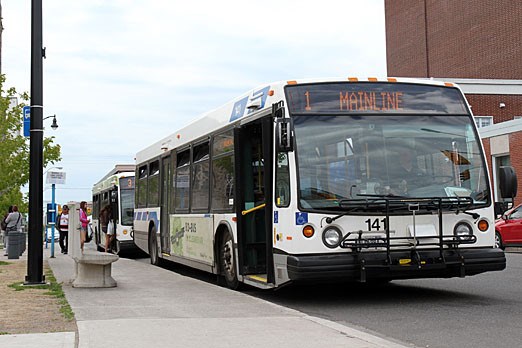Thunder Bay Transit planners believe there's room to grow ridership in the system, despite the fact the city's population is not increasing.
The number of trips recorded annually has been flat since 2012, totaling approximately 3.6 million. Transit Manager Brad Loroff told tbnewswatch.com he believes that's attributable partly to "a net zero population growth."
But that doesn't preclude building ridership in the years ahead.
"The people that we talked to through the transit plan master study indicated that they're looking for better service levels," Loroff said. "Things like more direct routes to allow for faster connections."
The challenge, not surprisingly, is where to find the money to pay for improvements. Loroff said recently-announced federal infrastructure funding "will allow us to accelerate some of these projects, and look into things like business planning to look into new route network improvements...stop infrastructure...(and) terminal infrastructure."
He said acquiring new scheduling software is one of the things that will make the transit system more efficient.
It's one thing, however, to increasing ridership among existing customers, and quite another to attract first-time riders who currently use other modes of transportation.
Loroff said Transit needs to know more about that potential client base.
"Are we competing with the car? Has the way that people are moving about the city changed? We know that...there's more cycling opportunities, there's more walking opportunities" as a result of the city's strategy to improve its trail network, he noted. To what degree people are using these options, and how their choices relate to transit service, Loroff said, "is not an exact science to calculate."
New bus shelters, an electronic fare or "smart card" system, revised routes, and potentially a new terminal in the inter-city area are all under consideration as Thunder Bay Transit looks at ways to be as user-friendly as possible.
Loroff summarized the ways to do that: "Plot the route network out so that it serves the needs of people...more direct routes...reduce the number of transfers that people need, so that they are not sitting on a bus for an hour and ten minutes. And what the service levels around that route network should look like."
These are changes that ultimately require the approval of city council for implementation and funding.
Regardless of the efforts that Transit makes toward greater convenience and increased ridership, it's unlikely to return to the passenger volumes recorded at the Lakehead in the 1950s and 1960s, when between 5 million and 6 million trips were logged annually.
"It was a different time, and people moved about differently...Not everyone had a car, and cities didn't have the road networks that they do today," Loroff observed.
